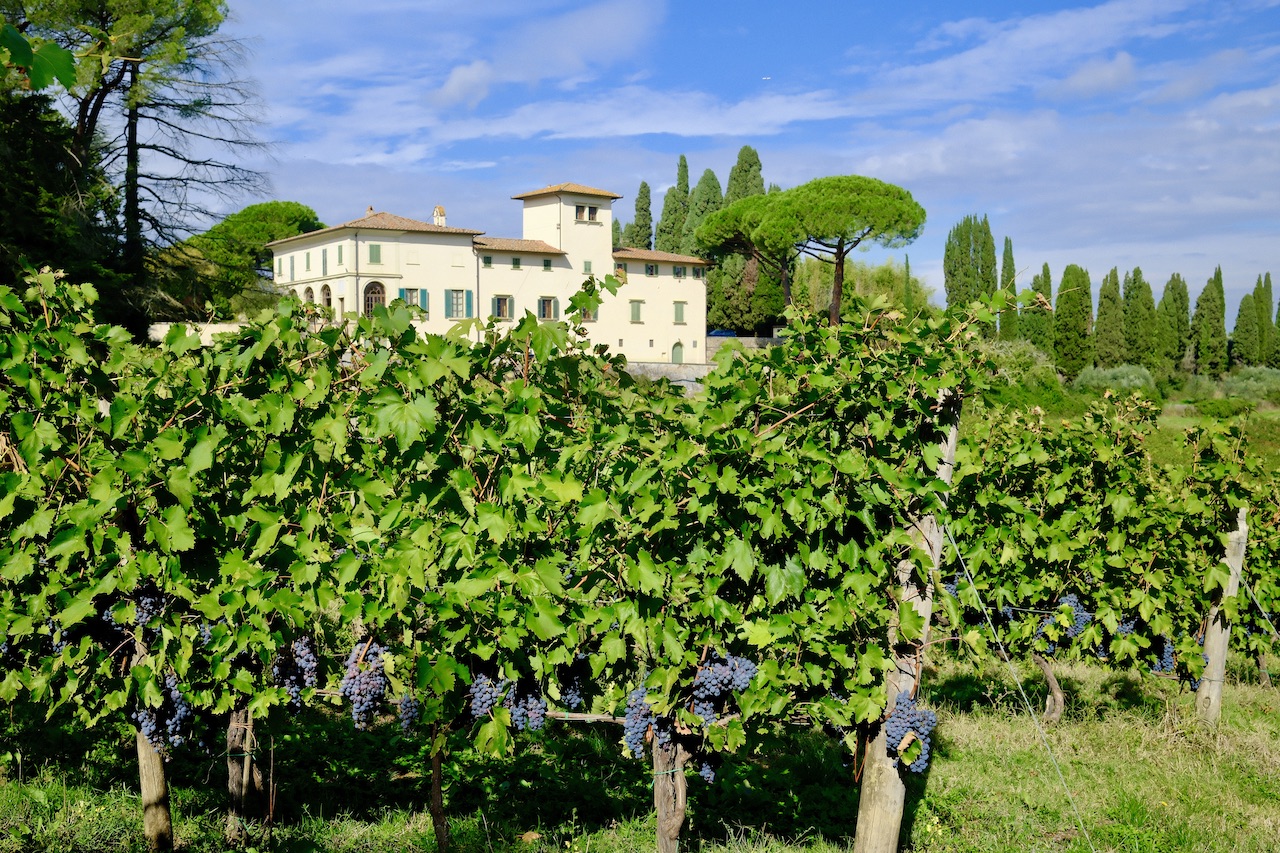Wine Tours in Tuscany - About Angie - +39 3333185705 - angie.chianti@gmail.com
While Prosecco has long stood as Italy’s celebrated response to France’s Champagne and Spain’s Cava, the winds of change are rustling through the vineyards of Tuscany. Here, amidst the rolling hills renowned for their storied reds, an exciting evolution is underway. A select number of Tuscan wineries, with whom we are proud to hold exclusive partnerships, have embarked on the journey of producing sparkling wines using the traditional metodo classico, a process demanding a minimum of three years aging on the lees. This method, more intricate and complex than that of Prosecco’s, promises sparkling wines of greater depth and sophistication, marking a bold step forward in Italy’s vinous landscape.
Prosecco: Italy’s Sparkling Marvel
Traditionally hailing from Veneto and Friuli-Venezia Giulia, Prosecco has charmed the global stage with its DOC and, for select wines, DOCG status, like the Montello e Colli Asolani Prosecco and Prosecco di Conegliano Valdobbiadene. Prosecco’s rise to prominence was catalyzed by its designation as an IGT in the 1990s, followed by its current denominations that underscored its quality and appeal. By 2014, Prosecco astonishingly surpassed Champagne in global sales, a testament to its widespread allure.
The Roots of Prosecco
Originating from the Glera grape and borrowing its name from the town of Prosecco near Trieste, this sparkling wine embodies a journey through history and tradition. The diverse grape blend permitted in Prosecco production adds to its unique character, making it a versatile companion to a range of culinary delights.
The Charm of Prosecco: A Closer Look at Production
Prosecco’s effervescence and delightful flavors are born out of a meticulous fermentation process known as the Charmat-Martinotti method. This method, pivotal to Prosecco’s identity, involves a two-stage fermentation that enhances its sparkling character.
First Fermentation
The journey begins with the first fermentation, where the base wine is created. This stage involves the traditional fermentation of Glera grapes, along with permitted varieties such as Verdiso, Bianchetta Trevigiana, Perera, and others, including international grapes like Chardonnay and Pinot Noir (vinified white). This initial fermentation transforms the sugars in the grapes into alcohol, resulting in a still wine that serves as the foundation for Prosecco.
Second Fermentation: The Charmat-Martinotti Method
The essence of Prosecco’s sparkle is developed during the second fermentation, conducted in large, sealed, stainless steel tanks known as autoclaves. Here, the base wine is mixed with sugar and yeast, initiating the second fermentation. Unlike traditional bottle fermentation used in Champagne production, the Charmat-Martinotti method confines the evolving carbon dioxide within the tank, integrating it into the wine and creating the characteristic bubbles of Prosecco.
This enclosed environment not only facilitates the development of Prosecco’s signature fizz but also allows winemakers to closely monitor and control the fermentation’s temperature and pressure. The precise regulation of these conditions is crucial for maintaining the fresh, fruity profile of Prosecco, preventing the yeast from overpowering the delicate flavors of the Glera grape.
After reaching the desired level of effervescence, the wine undergoes a cooling process to halt fermentation, followed by filtration to remove the yeast. The final step involves bottling the wine under pressure to preserve its sparkling quality until it’s ready to be enjoyed.
Styles and Sweetness Levels
The versatility of Prosecco is further showcased in its varying styles—spumante (fully sparkling), frizzante (lightly sparkling), and tranquillo (still)—and sweetness levels, from the dry, crisp brut to the sweeter extra dry and dry options. Each style and sweetness level offers a unique tasting experience, catering to diverse palates and occasions.
This Charmat-Martinotti method, central to Prosecco’s production, is the key to achieving large-scale, quality sparkling wines at an accessible price point. It’s a testament to Italian winemaking innovation, allowing Prosecco to grace tables worldwide with its lively bubbles and embody the spirit of celebration.
Is prosecco champagne?
If you’re looking for a quick answer: no, Prosecco is not Champagne. Starting from Veneto and Friuli-Venezia Giulia wineries, Prosecco became more and more famous in recent decades and incredibly has overtaken French Champagne in global sales.
Tuscany’s Sparkling New Wave
As Tuscany ventures into the realm of metodo classico sparkling wines, the region’s winemakers are drawing from their rich heritage to craft bubbles that stand apart. This initiative reflects a blend of innovation with tradition, promising sparkling wines that elevate Tuscan viticulture to new heights. With three years of aging on the lees, these wines offer a complexity and richness that rival the most esteemed sparkling wines of the world.
A New Era of Tuscan Elegance
This pioneering move by Tuscan wineries not only diversifies the region’s wine portfolio but also invites wine enthusiasts to discover another facet of Italy’s wine prowess. As Tuscany embraces the production of metodo classico sparkling wines, it stands as a testament to the region’s commitment to excellence and innovation.
Celebrating with Tuscan Sparkling Wine
As we look toward celebrations, from intimate gatherings to grand festivities, consider the emerging sparkling wines of Tuscany as a sophisticated alternative. These meticulously crafted bubbles, rooted in the heart of Italy’s most revered wine region, are poised to bring an added touch of elegance and uniqueness to any occasion.
In this era of exploration and appreciation of Italian wines, Tuscany’s foray into metodo classico sparkling wines marks a thrilling chapter in the ongoing story of Italy’s vinous heritage. We invite you to join us on this sparkling journey, where tradition meets innovation in every effervescent sip.





